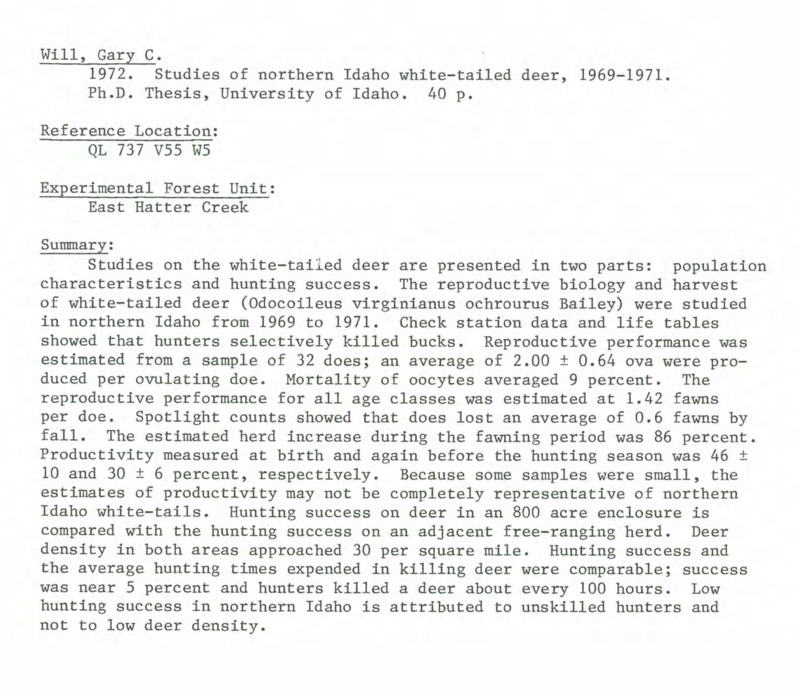PDF PREVIEW
Studies of Northern Idaho White-Tailed Deer Item Info
- Title:
- Studies of Northern Idaho White-Tailed Deer
- Creator:
- Will, Gary C.
- Date Created:
- 1972
- Description:
- Studies on the white-tailed deer are presented in two parts: population characteristics and hunting success. The reproductive biology and harvest of white-tailed deer (Odocoileus virginianus ochrourus Bailey) were studied in northern Idaho from 1969 to 1971. Check station data and life tables showed that hunters selectively killed bucks. Reproductive performance was estimated from a sample of 32 does; an average of 2.00 + 0.64 ova were produced per ovulating doe. Mortality of oocytes averaged 9 percent. The reproductive performance for all age classes was estimated at 1.42 fawns per doe. Spotlight counts showed that does lost an average of 0.6 fawns by fall. The estimated herd increase during the fawning period was 86 percent. Productivity measured at birth and again before the hunting season was 46 + 10 and 30 + 6 percent, respectively. Because some samples were small, the estimates of productivity may not be completely representative of northern Idaho white-tails. Hunting success on deer in an 800 acre enclosure is compared with the hunting success on an adjacent free-ranging herd. Deer density in both areas approached 30 per square mile. Hunting success and the average hunting times expended in killing deer were comparable; success was near 5 percent and hunters killed a deer about every 100 hours. Low hunting success in northern Idaho is attributed to unskilled hunters and not to low deer density.
- Document Type:
- Thesis
- Library Call Number:
- QL737.U55W5
- Subjects:
- East Hatter Creek white-tailed deer population characteristics hunting wildlife
- UIEF Unit:
- East Hatter Creek
- Location:
- UIEF; East Hatter Creek
- Latitude:
- 46.840526
- Longitude:
- -116.780027
- Department:
- Department of Wildlife Resources
- Type:
- Text
- Format:
- application/pdf
Source
- Preferred Citation:
- "Studies of Northern Idaho White-Tailed Deer", UIEF Research Exchange, University of Idaho Library Digital Collections, https://www.lib.uidaho.edu/digital/uief/items/uief_0132.html
Rights
- Rights:
- In copyright, educational use permitted.
- Standardized Rights:
- http://rightsstatements.org/vocab/InC-EDU/1.0/

